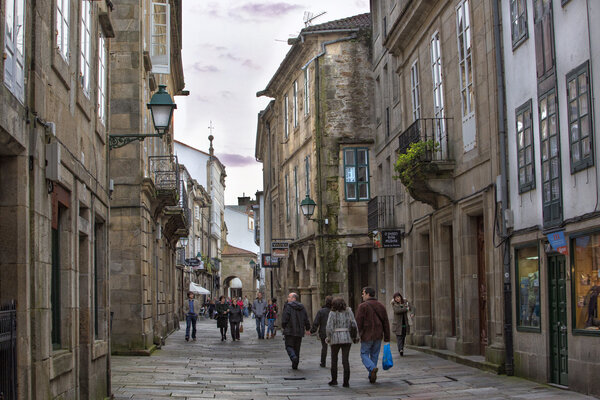
 May 10, 2021
May 10, 2021Open debate in Santiago: limit the bike in the historic city or expand its use with difficult specific lanes?
The layouts of the historic cities pose a number of problems that the Group of World Heritage Cities of Spain has already thoroughly analysed, drawing up a white paper on mobility. In cases such as the city of Avila, the Consistory has determined that the use of the bicycle in the monumental area is difficult, but "the White Paper also highlights it in the case of Santiago", with many areas of the historic centre where the width of the track does not arrive to three meters. In the city, moreover, as the document points out, "pedestrians are at the forefront of mobility".
In Salamanca, "the coexistence of pedestrians and cyclists has been chosen, recommending the latter to descend from the bicycle when the pedestrian density is high, which will be signposted".
In Toledo, located on a hill with 100 meters of elevation and cobblestone streets, it has been chosen to build bike lanes only in the new city.
In the same way that the coexistence between cyclists and motor vehicles is conflicting, it is also not easy between cyclists and pedestrians.
It is also appropriate to regulate the place where to park or tie bicycles, not allowing them to be padlocked to trees, or to traffic lights or streetlights because of the risk this could pose to people.
Open controversy between cyclists and city hall will come to conclusions that improve the use of public space in the historic city.
Problems of mobility of people and goods are a key issue in the objectives of the AtlaS.WH project, to be included in the sustainable management plans developed by each partner.
In Salamanca, "the coexistence of pedestrians and cyclists has been chosen, recommending the latter to descend from the bicycle when the pedestrian density is high, which will be signposted".
In Toledo, located on a hill with 100 meters of elevation and cobblestone streets, it has been chosen to build bike lanes only in the new city.
In the same way that the coexistence between cyclists and motor vehicles is conflicting, it is also not easy between cyclists and pedestrians.
It is also appropriate to regulate the place where to park or tie bicycles, not allowing them to be padlocked to trees, or to traffic lights or streetlights because of the risk this could pose to people.
Open controversy between cyclists and city hall will come to conclusions that improve the use of public space in the historic city.
Problems of mobility of people and goods are a key issue in the objectives of the AtlaS.WH project, to be included in the sustainable management plans developed by each partner.

